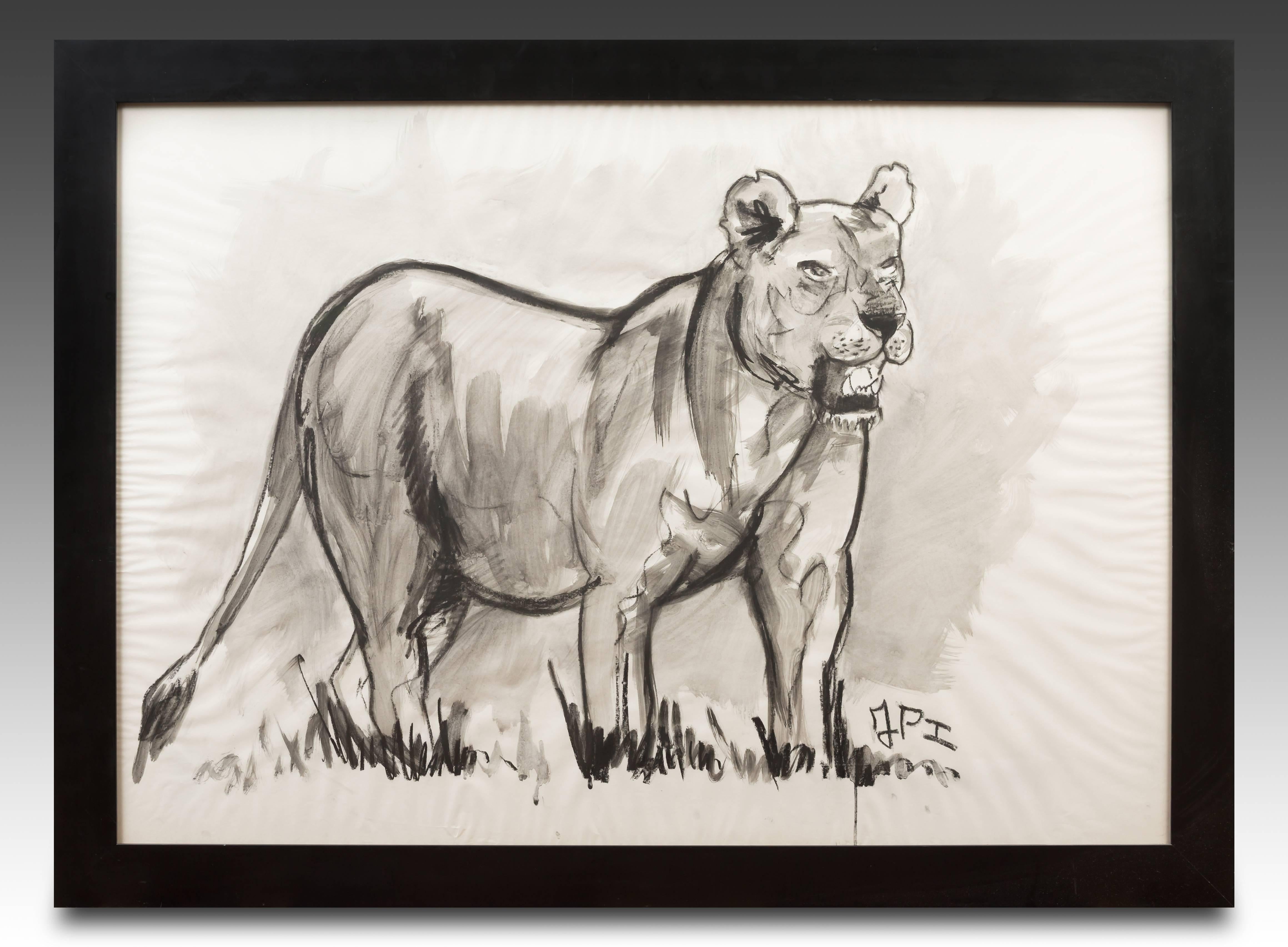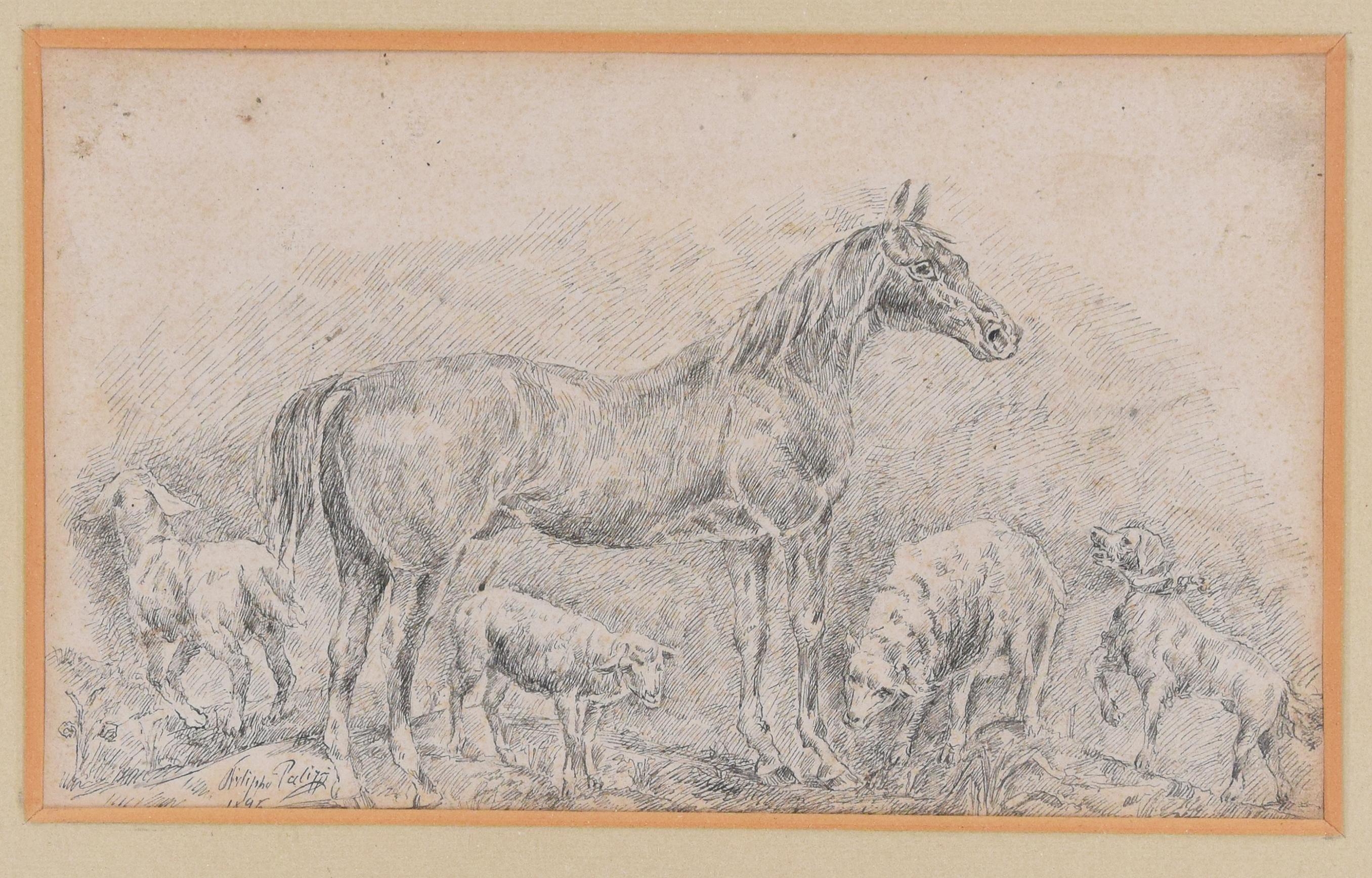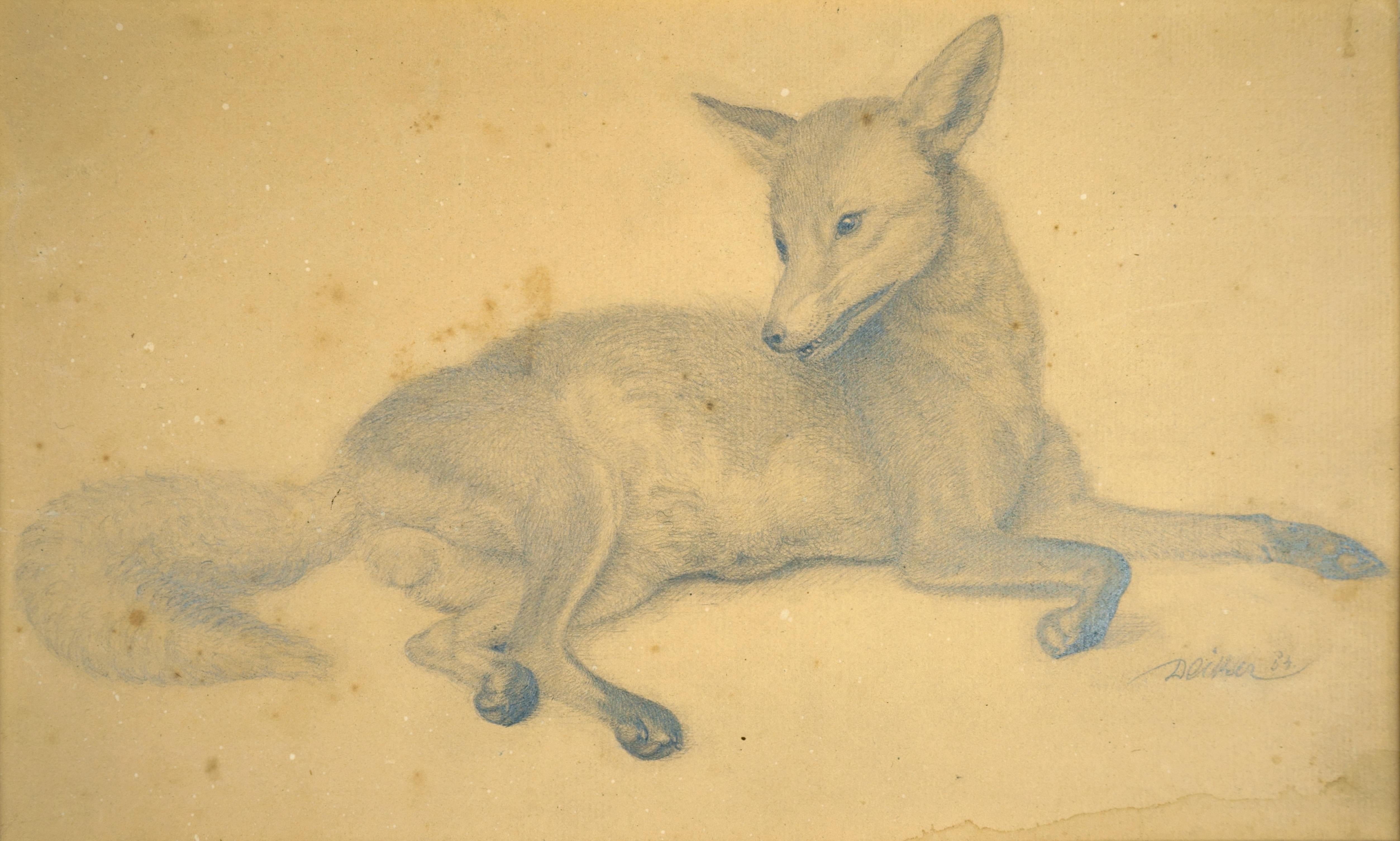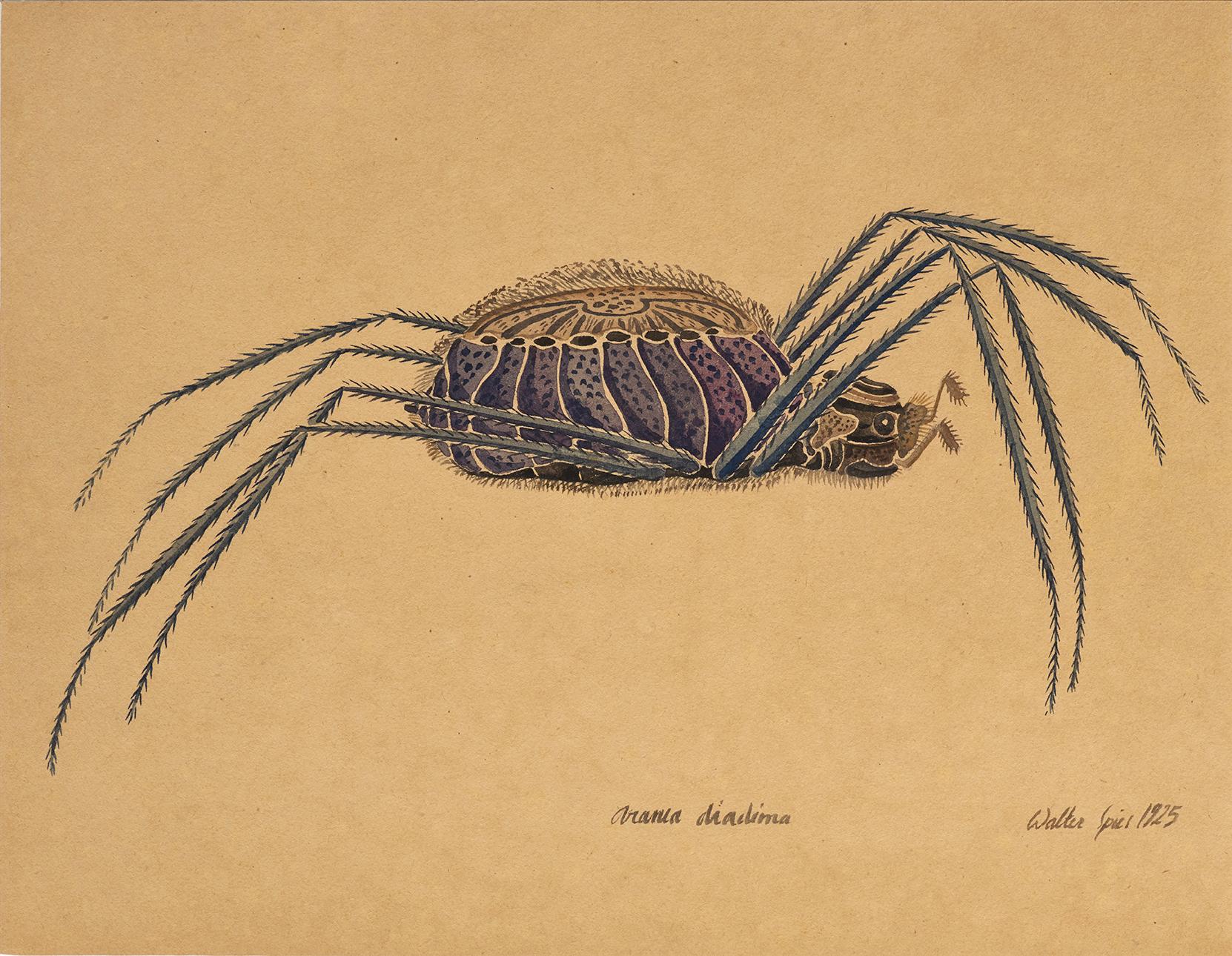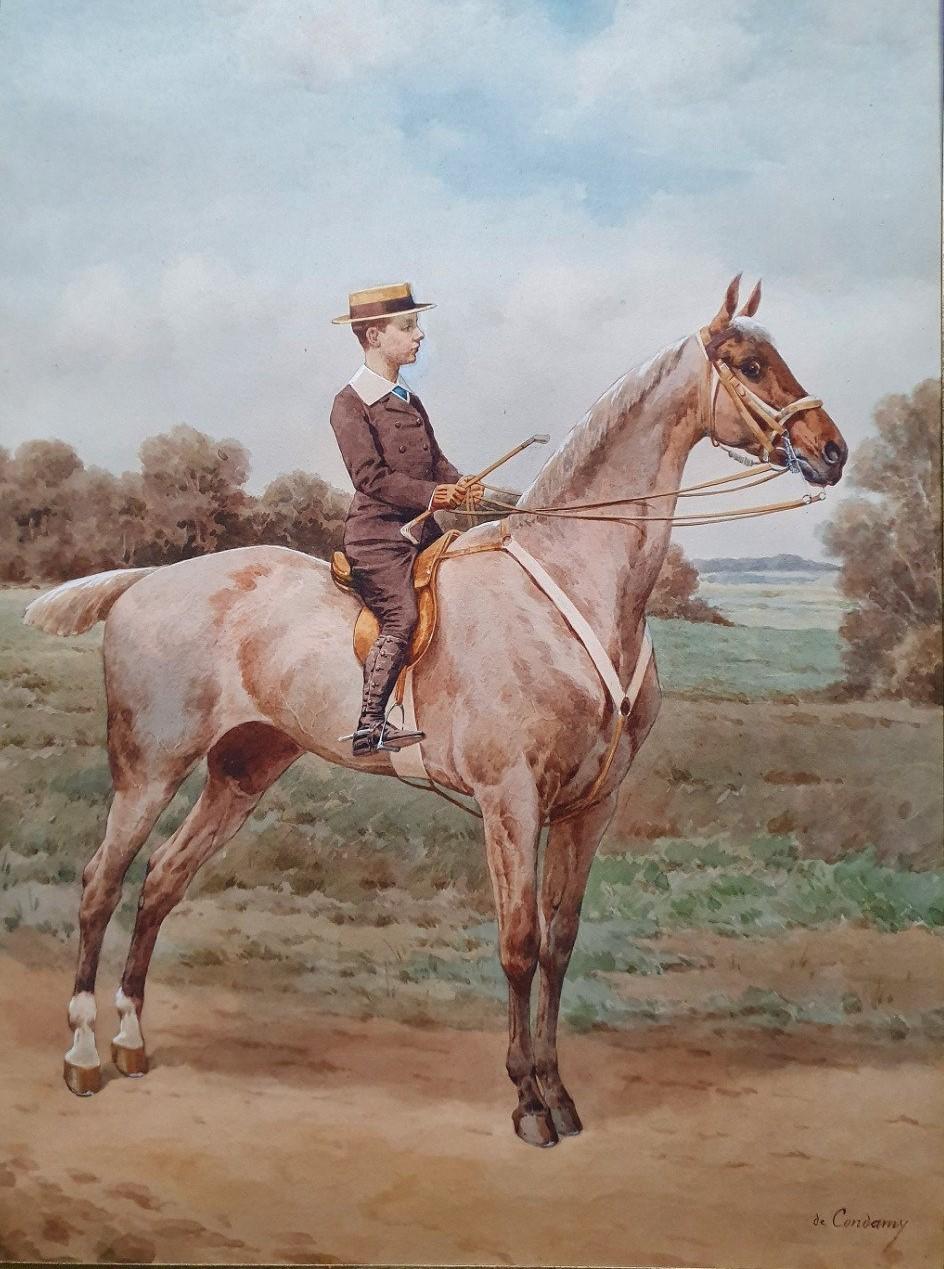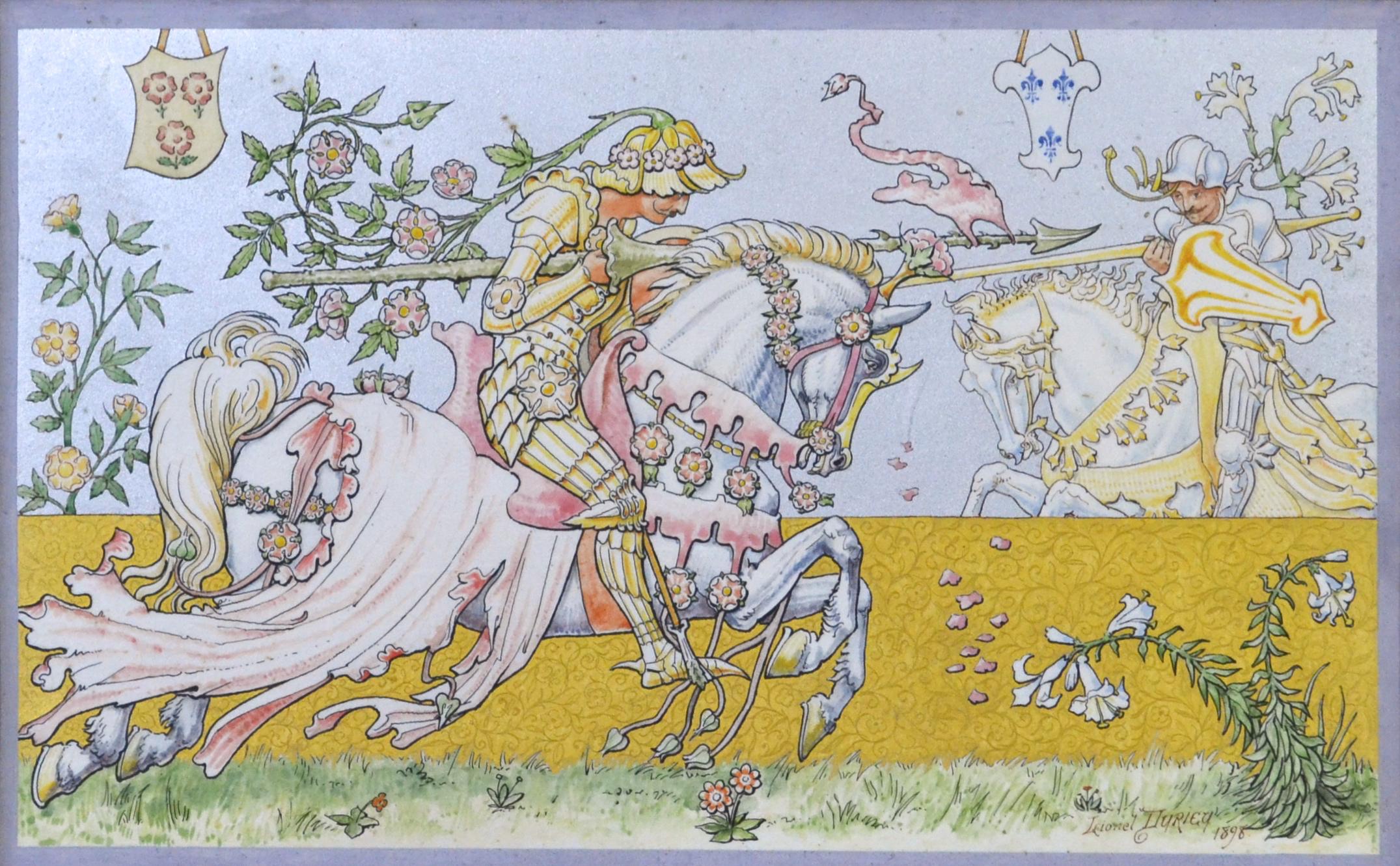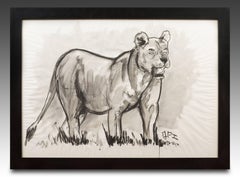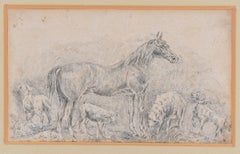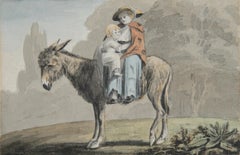
A Mother and Child on a Donkey - 18th century watercolour by John White Abbott
View Similar Items
1 of 5
John White AbbottA Mother and Child on a Donkey - 18th century watercolour by John White Abbott1786
1786
About the Item
- Creator:John White Abbott (1763-died circa 1851, British)
- Creation Year:1786
- Dimensions:Height: 3.125 in (7.94 cm)Width: 4.75 in (12.07 cm)
- More Editions & Sizes:Unique work Price: $1,533
- Medium:
- Movement & Style:
- Period:
- Condition:
- Gallery Location:London, GB
- Reference Number:1stDibs: LU104034412041
You May Also Like
- 'Female Nude with Animals, ' by Charles Edward Burdick, Watercolor PaintingBy Charles BurdickLocated in Oklahoma City, OKThis framed 16.25" x 30.25" watercolor painting by Charles E. Burdick depicts a possible interpretation of Noah's Ark. A nude female figure sits on coastal rocks next to a waterscape with a boat with sail in the distance. She is surrounded by five prominent animals including a tiger, lion and zebra which she playfully entertains. The painting is In a darker palette of blues, browns, white, and black. The painting is framed and matted. Charles Edward Burdick...Category
Late 20th Century Naturalistic Animal Drawings and Watercolors
MaterialsWatercolor
- Lioness Fusain Drawing by Jean PoulainBy Jean PoulainLocated in Pasadena, CAJean Poulain 1884-1967 Jean Poulain was born in 1884 in Katanga (former Belgian Congo). Self-taught artist from an early age, he will be in search of all the emotions and beauty of ...Category
1930s Naturalistic Figurative Drawings and Watercolors
MaterialsCarbon Pencil
$2,000 Sale Price20% Off - Horse with Herds - China Ink Drawing by Filippo Palizzi - 1895By Filippo PalizziLocated in Roma, ITImage dimensions: 14x22 cm. Horse with Herds is a really beautiful china ink original drawing on paper, signed and dated in black ink on lower margin by the Italian artist, Filippo Palizzi...Category
1890s Naturalistic Animal Drawings and Watercolors
MaterialsInk
- Vigilant Fox - The psyche of the fox -Located in Berlin, DECarl Friedrich Deiker (1838 Wetzlar - 1892 Düsseldorf). Vigilant fox. Pencil drawing on brown paper, 18 × 29.5 cm (inside measurement), 31.5 x 43.5 cm (mount), signed and dated "Deiker [18]54" at lower right. - a little bit stained, with a light water stain at lower right About the artwork Carl Friedrich Deiker's consummate ability to depict animals is already evident in this early work. He brought a whole new psychological dimension to animal painting, so that one could literally speak of animal portraits. The naturalistic appearance of the fox alone makes it seem alive. Every strand of muscle, even every hair, is captured, which requires an intensive artistic study of animal anatomy and physiology. But the fox's real liveliness comes not from its natural appearance, but from its internal movement: Stretched out, it has been brought out of rest. It turns around and, with its ears pricked up, looks intently in the direction from which it has seen something. His mouth is slightly open and his pointed teeth are bared, as if he were growling. Tension gradually takes hold of his whole body. While the hind legs were still in a relaxed position, closely observed by Deiker, one front leg was already raised, ready to begin a rising movement. The fox seems so alarmed with all its senses that one gets the impression that, at any moment, its tail will move jerkily and the animal will jump up. While wild animals have traditionally been portrayed as beasts or anthropomorphised, often for caricatural purposes, Deiker explores their inherent nature by attempting to capture their psychic impulses. The wild animal is neither bestial nor human, but a creature in its own right, valued by Deiker for its own sake. In this way, he brought the dignity of the animal into representation and raised animal painting to a whole new artistic level. About the artist Carl Friedrich Deiker was the son of the drawing teacher Christian Friedrich Deiker and the younger brother of the animal painter Johannes Deiker. In addition to the family art lessons, Christian Friedrich shared a studio with his brother Johannes at Braunfels Castle, Deiker attended the drawing academy in Hanau, and from 1858 he was a student at the Karlsruhe Art Academy, where he studied under the landscape painter Johann Wilhelm Schirmer. Carl Friedrich Deiker was already in demand as an artist during his first year: Grand Duke Frederick I of Baden, Margrave Max of Baden and Grand Duke Michael of Russia bought hunting scenes by him. In 1859 he went on a study trip to the Reinhardswald. Just as the Barbizon School had rediscovered the landscape, Deiker opened up the forest for animal painting. From 1861-64 Deiker had his own studio in Karlsruhe, then moved to Düsseldorf, where his brother Johannes followed four years later. Deiker married a daughter of the landscape painter Karl Hilger and remained in Düsseldorf until his death. In 1868 he finally achieved international fame with his painting 'Pursued Noble Deer' and was regarded as a virtuoso new founder of animal painting. "Deiker brought for the first time a truly great artistic quality to animal painting [...]". - Hans Vollmer From 1870 he participated in the academic art exhibitions in Berlin, Dresden, Munich and Hanover. He was also very busy as an illustrator. He drew for the Gartenlaube, the Salon, the Universum, and produced many of the finely illustrated hunting and animal books of the period. He also worked as a printmaker, while his oil paintings circulated as reprints by Franz Dinger. From 1865 to 1892 Deiker was a member of the artists' association Malkasten. Carl Friedrich Deiker's life's work was honoured with a large posthumous memorial exhibition at the Düsseldorf Kunsthalle in 1892. His son Carl Deiker, born in 1879, also became a painter. Selection of art museums that own works by Carl Friedrich Deiker: Hamburger Kunsthalle / Kunsthalle Karlsruhe / Kunstmuseum Düsseldorf / Wallraff Richartz Cologne. Selected Bibliography H. Schmidt: Johannes and...Category
1850s Naturalistic Animal Drawings and Watercolors
MaterialsPencil
$1,231 Sale Price20% Off - Aranea diadima a study by Walter Spies, an artist living in Indonesia in the 30sLocated in PARIS, FRWalter Spies was one of the first Europeans to settle in Bali after a stay in Java. He greatly contributed to the discovery and popularization of Balinese...Category
1920s Art Deco Animal Drawings and Watercolors
MaterialsWatercolor
- Teenager on horseback in summer landscape, Equestrian, late 19th centuryLocated in DEVENTER, NLVery fine watercolour/ gouache from the French artist Charles Fernand de Condamy ( 1847-1913) . Condamy was a specialist in hunting subjects and equestrian portraits. He was an extr...Category
Late 19th Century Animal Drawings and Watercolors
MaterialsPaper, Watercolor
